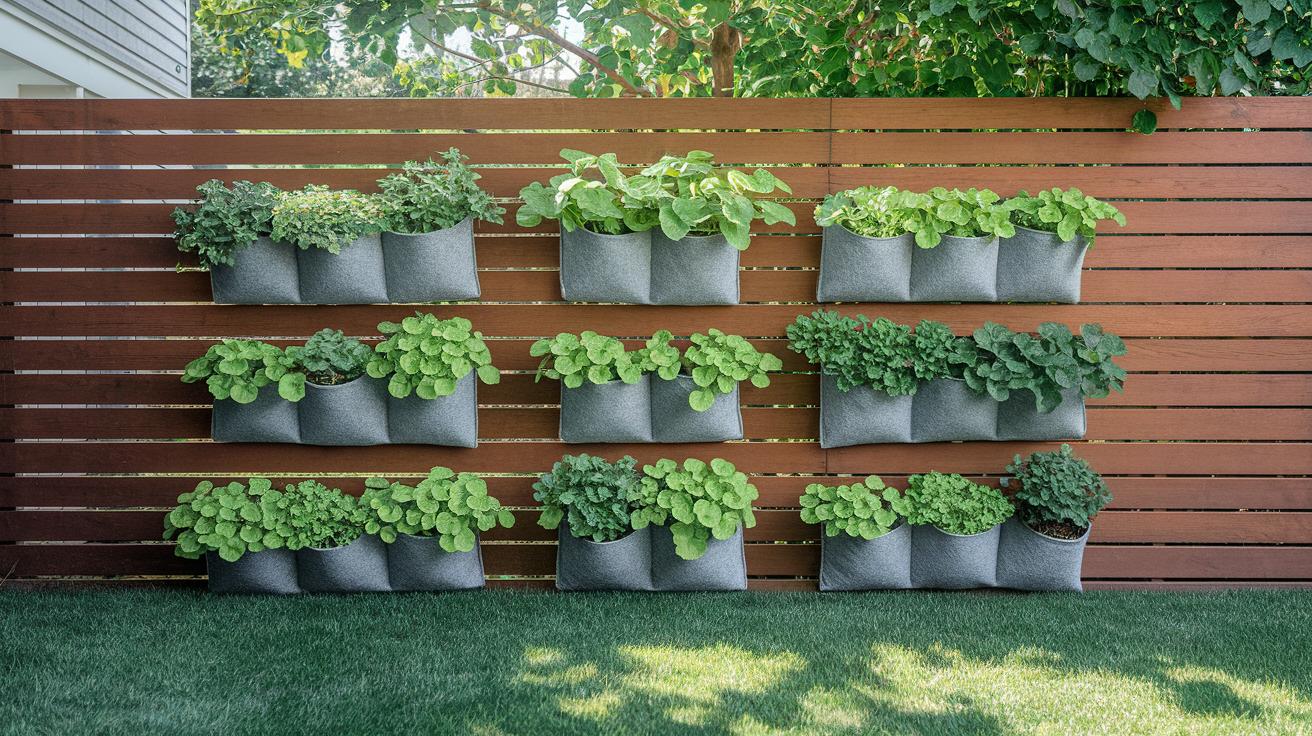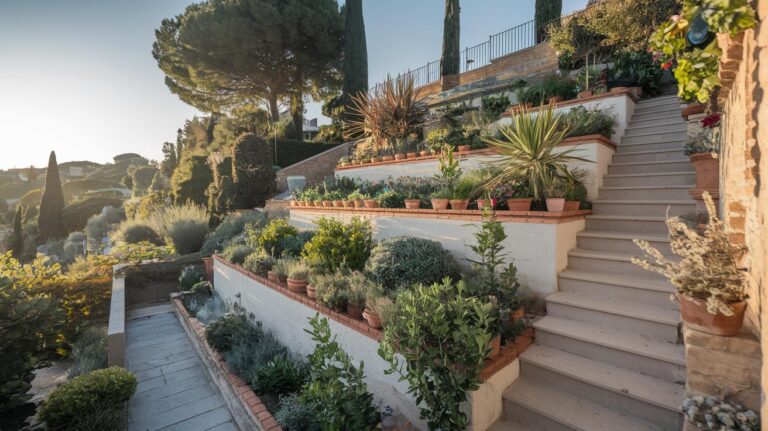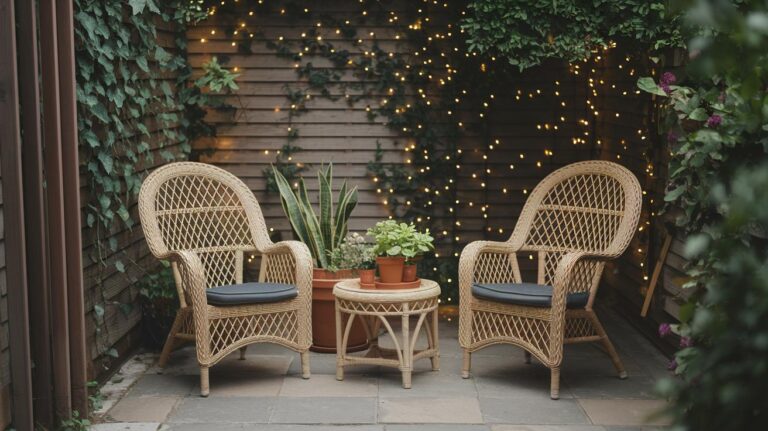Choosing Shade Tolerant Plants For Vertical Gardens Awesome
Think that shady wall is just empty space? You might be surprised at how much life you can pack into those cool, shadowed spots. It doesn’t take hot sun to grow a leafy display.
Wow. I once tucked a fern (a leafy plant that loves shade) into a dark corner. Week after week, its soft green fronds slowly opened up before my eyes. By the end of the month, that little fern was practically glowing in the dim light.
And here’s the good part. You can turn every shadowed nook into a living green wall you’ll love, and I’ll walk you through picking shade-tolerant plants (plants that grow well without much sun). Then I’ll show you how to set up a vertical garden (stacking pots or planters up a wall to save space). Trust me, it’s easier than you think, and it’s fun!
Choosing Shade Tolerant Plants for Vertical Garden Success
First, scout your wall at different times of day. Notice where the soft light hits and where shadows linger. I once set my pothos in what felt like a cave – it still sent out fresh leaves every week! That tells you which spots see dappled sun or deep shade – perfect for shade-loving plants.
When you pick plants, go for ones that grin in low light. Boston ferns with their feathery fronds, English ivy that climbs like a green curtain, pothos vines that spill over edges, and Begonia varieties with colorful leaves all shine in shade.
Shade-loving plants prefer soil that feels like a damp sponge – moist but not soggy. Mix garden dirt with organic matter (decayed leaves or compost that feeds the soil) and perlite (small, white bits that help air mix into soil) so water drains but still hangs around just enough. If the mix stays dripping, roots will gasp and rot.
Now think size. You don’t want a creeping fig elbowing out a tiny fern. Place trailing vines at the top so they tumble down like a green waterfall. Tuck smaller ferns and Begonias in gaps near the middle. That way you get a lovely mix of lacey fronds and bold, fleshy leaves without the crazy crowd.
Shade plants still need a steady drink. Water on a regular schedule so leaves stay glossy and roots stay happy. Pop over every few days and press a finger into the soil. If the top inch is dry, give it a good soak. Shady nooks can dry unevenly – oops, I learned that the hard way.
Planting now sets you up for a lush green wall all season.
Plant Profiles of Shade-Loving Vertical Garden Species

These shady wall planters show off plants that turn dim spots into green magic. They drape, cascade, whisper soft greens. Boston fern (fronds, or leaf segments) and Begonia rex (bold, patterned leaves) bring feathery and showy textures. English ivy and golden pothos (vine with shiny, heart-shaped leaves) are laughably easy.
Golden pothos need just a weekly drink and a gentle trim to look their best. Snake plant (stems that shrug off low light and dry spells) thrives on neglect. It’s perfect for newbies. And cast iron plant (tough leaves that resist low light) stands guard in dark corners.
By the way, my cat naps under the Boston ferns. Take a peek at the table below. It shows light needs, soil type, watering schedule, and how big each plant can get. That way you can mix and match without crowding or leaving thirsty stragglers.
I learned the hard way that overwatering my Begonia rex in a felt pocket planter (a fabric pocket you hang on the wall) caused root rot (when roots turn mushy). Oops. Now I let the soil dry a bit between drinks, and my snake plant leaves plump up with happiness.
Note how ivy vines can stretch up to six feet. Give them room or let them drape freely. Each profile helps you plan a balanced living wall. Enjoy!
| Plant | Light Needs | Soil Type | Watering Frequency | Mature Size |
|---|---|---|---|---|
| Boston fern | Partial to deep shade | Moist, organic-rich | Keep evenly moist | 12–18″ spread |
| English ivy | Low to medium light | Well-draining | Moderate | Trailing up to 6′ |
| Golden pothos | Indirect shade | Moist, well-draining | Weekly | 10–15′ spread |
| Begonia rex | Deep shade | Rich, well-draining | Evenly moist | 6–12″ height |
| Snake plant | Low light | Sandy loam | Low frequency | 1–3′ height |
| Cast iron plant | Low to medium light | Fertile, well-drained | Moderate | 2′ height |
Optimizing Soil Mix and Irrigation for Shade Vertical Gardens
Shade walls can fool you. Some spots hold water forever and others dry out in a snap. So pick a soil mix that soaks up just enough moisture and still lets air swirl around the roots.
Try a blend of coconut coir (coconut fiber that holds water) and bark fines (tiny bark bits that create air pockets). Stir in 5–10 percent compost (decayed organic matter that feeds plants) and a handful of perlite (white pebbles that boost drainage). You’ll end up with a fluffy mix that feels like soft sponges cradling your roots and keeps moisture in little fiber clouds.
Aim for a soil pH of about 6.0 to 6.8. That’s the sweet spot where most veggies and ornamentals can sip up nutrients without fuss.
And don’t skip a drainage layer. Tuck about an inch of gravel or a special mat under each pocket. It’s like a cozy cradle for thirsty roots, it catches extra drips and stops root rot before it starts.
Next, rig up drip tubing or an irrigation manifold with a timer. For a quick how-to, peek at vertical garden irrigation system design. In deep shade, water two or three times a week. Your roots want a slow, steady drink but hate wallowing in puddles.
Moisture sensors are a total game-changer. Stick one right by the root ball, just below the soil surface. You’ll see which pockets go bone dry or stay too soggy. Then tweak your schedule so every pocket gets its happy medium. And remember: aim the drip at the base, not on the leaves.
Designing and Installing Shade-Tolerant Vertical Garden Structures

Before you start, take a close look at your wall. You could use modular panels that snap together like toy bricks. Or hang felt pocket planters (fabric pouches that hold soil) in neat rows for a light, breathable vibe. Check out best materials for vertical garden structures when you weigh panels vs pockets. By the way, I once grabbed the wrong bracket and had to laugh as I re-drilled my holes.
Wet planting media (the soil mix where plants grow) can tip the scale. Think of it like a sponge full of water. A soaked mix can add 15 to 20 pounds per square foot, you know. So fill a tray, let it soak, then weigh it. That shows which wall anchors (hardware that holds up your garden) to use. Aim for anchors rated above 25 pounds per square foot for extra peace of mind.
Next, protect your wall. Lay landscape fabric (a breathable cloth) or a water-resistant membrane against the surface. In shaded spots that get dappled sun, pick UV-resistant straps, brackets, and screws so they won’t fade or weaken. Even a thin layer of backing can save your paint and studs from damp damage.
Now let’s mount your garden. First, use a level to draw a straight line. Drill masonry anchors (heavy-duty plugs for brick or concrete) every 12 inches. Snap on the support rails. Secure each rail with heavy-duty screws. Then hang each tray or pocket. Easy, right?
Finally, tuck in a lightweight soil mix. Feel the soft earth as you press it in. Slide in your shade-loving plants. Put bushy ones at the base where they’ll get attention. Trail vines along the top or edges so they spill down. And watch your wall garden turn into a lush, green masterpiece!
Choosing Shade Tolerant Plants For Vertical Gardens Awesome
Think of your vertical garden as a shy friend. Once a week, do a quick soil check. Stick a soil probe (tool to test moisture) into each pocket. If the top inch of soil feels dry on your finger, give it a good drink.
- Snip leggy growth every 4 to 6 weeks. Cut back long vines or thin fern fronds so new shoots can fill the gaps.
- Pinch off dead begonias as soon as you spot wilted flowers. Taking off faded blooms helps the plant send energy into fresh leaf growth.
- Feed every four weeks with a balanced fertilizer (N-P-K means nitrogen, phosphorus, potassium). Or sprinkle in slow-release fertilizer (pellets that feed over time) at the season’s start.
You know, watch for sneaky bugs under leaves. Spider mites (tiny web-making pests) and scale insects (little bumps on stems) love humid, shaded spots. Mix a bit of insecticidal soap or neem oil (plant-safe bug spray) with water and mist your leaves lightly. That same spray can help stop powdery mildew (white fungal dust) and root rot (roots turning mushy from too much water).
If fungus pops up, move the pockets a bit farther apart so air can flow. Then ease off watering for a few days.
Swap in heat-tolerant shade lovers like Calathea (a tropical plant with bold patterns) when the summer sun peaks. Then tuck in hearty ferns as fall cools down. Seasonal swaps like these keep your green wall lush from steamy July mornings through crisp October evenings.
Oops, I once forgot to water for a week and nearly lost my ferns, lesson learned!
Final Words
Right in the thick of plant selection, you’ve learned which ferns, ivies, pothos, and begonias thrive in low-light walls.
Then we covered soil mixes, coconut coir, bark fines, and perlite, plus a drip timer setup to keep media just damp enough.
We explored sturdy panels, pocket planters, and weight calculation steps to secure your green wall.
And you’ve got a simple trim, feed, and pest-check plan to keep things fresh.
Here’s to your confident choosing shade tolerant plants for vertical gardens adventure, happy planting!
FAQ
How do I select the best shade-tolerant plants for a vertical garden?
The best shade-tolerant plants for a vertical garden include Boston fern, English ivy, golden pothos, Begonia rex, snake plant, and cast iron plant—all thrive in low light and have similar moisture needs.
What are the care requirements for top shade-loving vertical garden species?
Care varies by species: Boston fern needs moist, organic-rich soil; ivy and pothos prefer a well-draining mix with moderate watering; snake plant tolerates drier soil and infrequent watering.
What soil mix and irrigation system work best in a shade vertical garden?
Use a blend of coconut coir or bark fines, compost amendments, and perlite for drainage at pH 6.0–6.8. A drip-irrigation system with an automatic timer ensures uniform root-zone coverage.
How do I design and install a sturdy structure for a shade-tolerant living wall?
Choose PVC panels or felt pocket planters mounted on anchors rated above 25 lbs/ft². Protect walls with landscape fabric and place heavier plants at the base for stability.
How do I maintain shade vertical gardens and troubleshoot common problems?
Check moisture weekly, prune leggy growth, and feed monthly with a balanced fertilizer. Inspect for pests and treat with insecticidal soap. Improve airflow to prevent fungal issues.







